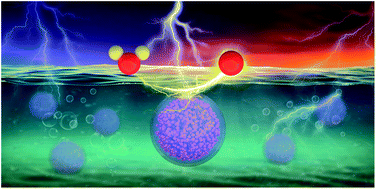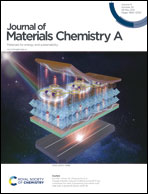In situ coating amorphous boride on ternary pyrite-type boron sulfide for highly efficient oxygen evolution†
Abstract
Multimetallic pyrite-type sulfides have been promising electrocatalytic materials for the electrochemical oxygen evolution reaction (OER), but sulfides still require further improvement due to the easy oxidization of surface atoms and the intrinsically low activity. Herein, we synthesized the ternary pyrite-type boron sulfide in situ coated by amorphous FeCoNiBx as an efficient and durable heterogeneous catalyst for OER. The spherical aberration-corrected transmission electron microscopy clearly shows that the adjacent crystals exhibit different phases with an approximately 2 nm amorphous layer on the external surface of the catalysts. This hybrid catalyst exhibits the superior OER activity with an attractive overpotential of 419.4 mV vs. RHE at 100 mA cm−2 in 1 M KOH solution and excellent stability over 10 h. Density functional theory calculations reveal that the B atoms can attract the electrons from metals, resulting in the expansion of the unoccupied d orbitals of metals, which is beneficial to attract the electrons from OH− groups, thus improving the OER performance of the catalyst combined with its special heterostructure. This study provides an advantageous method for engineering the electrical structure of pyrite-type sulfides for high OER activity and long durability.



 Please wait while we load your content...
Please wait while we load your content...